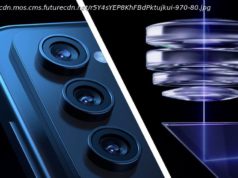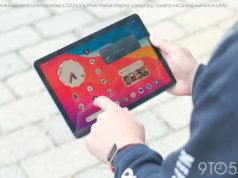Impressive Refinements that are Difficult to Impress
The Galaxy S8 is still a beautiful smartphone, so beautiful that I almost forgot about Samsung’s terrible software experience and the unfortunate incident with the Note 7, in fact I got my very own unit at the sales launch last year, which I also have to admit that the add-on purchase offer partially drove me to buy one as well, the S8 is by far one of the most satisfying Samsung devices I’ve owned. When I got my hands on the Galaxy S9 in MWC 2018, my immediate thoughts were – what is Samsung trying to offer this time? The S9 feels and looks exactly like its predecessor as if there weren’t any obvious upgrades, during my first impressions I was quick to conclude while things such as the dual aperture camera and AR emoji are cool, these software features aren’t compelling enough to make me want to upgrade from my S8, I even wrote an article back then on why you shouldn’t buy the phone at this point of time. However, after given the opportunity to spend more than a week with the Galaxy S9, I’m finally convinced that this is the flagship that I’m going to own this year, just not that soon.
“It looks the same as the Galaxy S8!”, this is the first reaction from everyone I’ve shown the Galaxy S9 to, but this doesn’t mean that Samsung didn’t make any changes to the phone’s aesthetics. Once you pick up the phone, you’ll immediately realize the difference in weight distribution, a more rounded side that offers a much comfortable grip, and a matte coated metal frame that can handle scratches better. The rear fingerprint scanner has gotten a better placement, it works faster and more precise than the Galaxy S8’s hardware, though people with larger fingers will not like the size of it, but it is definitely an improvement nonetheless.
The Infinity Display has the same size and display resolution as last year’s S8, though I have been spoilt thoroughly with the Razer Phone’s 120Hz panel, this is still one gorgeous looking panel that has great contrast and brightness levels, touch response has also somehow improved from the S8, as I find myself making less errors when typing on the S9. Like the S8, the Galaxy S9 can play HDR video content that uses the HDR10 profile, it is automatically enabled when playing HDR videos on YouTube and certain content on NetFlix.
One of the biggest, and probably my favorite improvement, is the inclusion of stereo speakers, which is provided and tuned by Samsung owned audio company, AKG. Like the HTC U11 Plus and iPhone X, the S9’s stereo speakers are located at the earpiece and the bottom right, they produce louder volume than both the U11 Plus and iPhone X, and with the help of Dolby Atmos, the soundstage gets brighter with an impressive output of low audio frequencies. The Galaxy S9 also maintains the 3.5mm headphone jack if you prefer the wired audio experience, and for those who prefer wireless audio, you’ll be glad to know that the S9 supports a variety of lossless Bluetooth codecs for Hi-Res audio, though only aptX is mentioned in the official specs, it also supports LDAC and Samsung HD.
Like the Galaxy S9’s hardware, the software is left largely unchanged from recent Samsung flagships, it ships with Android 8.0.0 with Samsung Experience 9.0 running atop. Bixby is still present as part of the experience and suffice to say, I’ve not find the need to use Google Assistant as Samsung’s voice assistant was able to pick up my Malaysian accent well enough to perform certain tasks. Even though Samsung hasn’t emphasized performance improvements or any AI features on the S9 like others, the Galaxy S9’s performance has improved significantly from the S8, all thanks to better memory optimization and the Exynos 9810 processor, there’s still minimal amount of lag across the user experience, but they aren’t as annoying as I find back on the S8.
Samsung has introduced Intelligent Scan as an improvement to facial unlock, should you prefer not to unlock the phone using fingerprint. This is a very smart alternative to Apple’s Face ID solution, where the company is able to save costs on sensors by utilizing both the front camera and Iris scanner to detect your presence, which addresses the issue of unlocking the phone with your face in dark rooms or cinemas. Unfortunately, though Intelligent Scan works well in dimly lit rooms, it struggles to detect my irises in a cinema hall, where it took almost 2 seconds to realize that I was looking dead straight onto the iris scanner, it still isn’t as sophisticated as iPhone X’s Face ID system, but thankfully the S9 has a great fingerprint scanner to save the feature from criticism.
The lack of facial recognition sensors also made AR Emoji a less fun feature on the Galaxy S9, which it isn’t able to detect facial reactions properly such as winking to make your emoji character look realistic, and it becomes worse when used in low light. While AR Emoji is more flexible than Animoji when it comes to content creation and sharing, it just doesn’t work well on certain faces we have tried in the office, it feels like a scary cartoonish version of yourself, and I personally don’t find the 15 auto generated GIFs cool enough to share it to my friends. If you hate creating an emoji of yourself, Samsung offers a number of cartoon characters for download on Galaxy Apps, though they don’t look as refined as characters on Animojis.
Having two mechanical apertures on a single camera lens is definitely a breakthrough in smartphone camera hardware, the Galaxy S9’s 12-megapixel camera happens to sport the widest aperture of f/1.5 for low light and f/2.4 for bright outdoors. The purpose of having two apertures can be simply be referred to the human eye, as we’ll need to expand our pupils to see better in dark environments and when exposed to brighter environments, the eye pupil adjusts automatically to see properly as to not blind our vision.
In this case, I have high expectations for the S9’s camera performance when it comes to automatic image adjustments, but unfortunately this doesn’t seem to be the case when I compare it to the S8’s 12-megapixel f/1.7 lens, pictures taken with the S9’s camera in both outdoors and low light look very much the same as the S8, and the S8’s camera outperforms the S9 in low light with better detail and color saturation. Take a look at the images below with a comparison slider and feel free to comment on them.
I’m also not impressed with the 960fps Super Slow Mo feature, which Samsung hyped a lot during the launch. First, it only records in 720p resolution, which feels darn pixelated when viewing on the phone’s display and more so on a PC monitor; and the worse part is, it isn’t easy to capture slow mo videos, as it only activates when it detects motion on a subject rather than the entire frame, you have got to be extremely close to the subject in order to capture a slow-mo video, it also doesn’t work well indoors and loses tracking when you move the slow-mo object too much.
The Galaxy S9’s camera fortunately still managed to impress me with 4K60p video recording, you can also take advantage of manual image controls such shutter speed, ISO and white balance while recording a video, the camera’s OIS hardware also worked well in eliminating stutters if you are shooting without a stabilizer, audio recording quality is also great with two microphones.
Home
United States
USA — IT Samsung Galaxy S9 Review: Impressive Refinements that are Difficult to Impress






